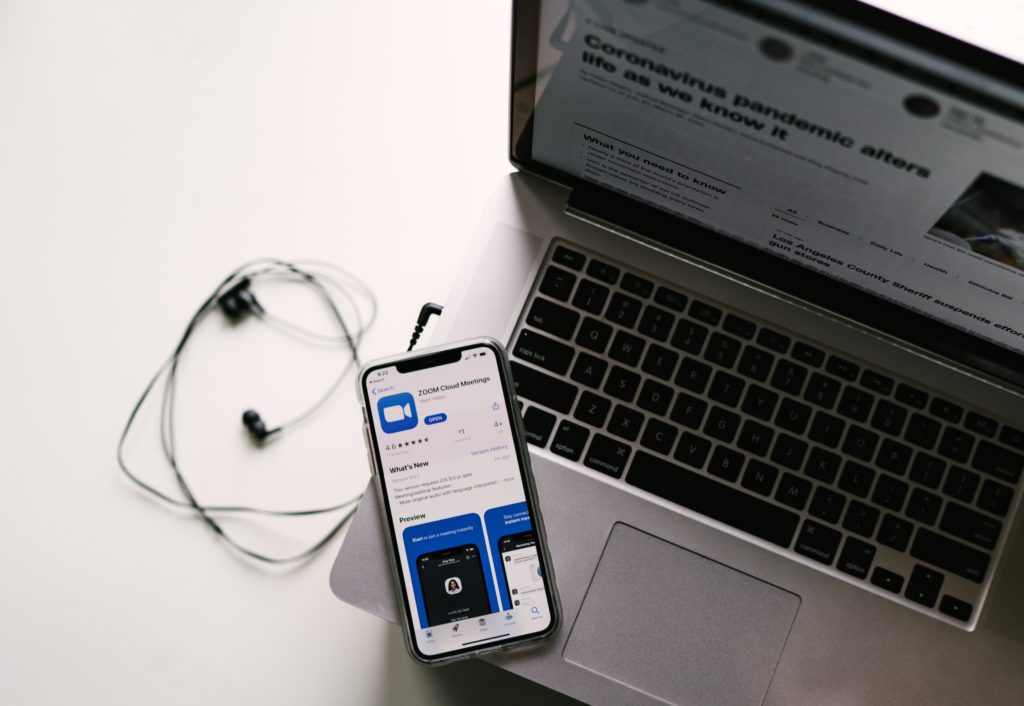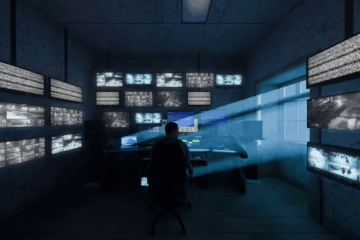Want to rid yourself of the time you waste on non-urgent communication with your remote staff, but still be able to digest EVERYTHING that is going on in your company?
We’re about to share with you game changing strategies for how to set-up your business to do exactly that.
We have achieved this at Support Adventure, even with 40 staff members on four continents. Our founder Eric Muth only has to take an unscheduled phone call on average twice a month, yet he was still able to 10x the growth of his global remote MSP staffing company in three years.
How?
Here is what he did!

Organize streams of communication efficiently
One of our core values is clear communication. The more you organize your communication, the less you actually have to repeat yourself ad nauseam. You do this by understanding the most practical use of each communication method. There are five points of contact for our remote team:
- Emails
- Video meetings via Zoom
- Ticketing System
- Chat
- Phone
Not all five of these are necessary for every type of communication situation you will find yourself in with your staff. They should be prioritized according to urgency, as you can see in the table below. Your goal should be to use the urgent, notification enabled streams as scarcely as possible, and streamline and proceduralize the use of non-urgent streams.
| Urgent | Not Urgent |
| Chat | Video meetings booked in advance |
| Phone | |
| Email with a subject starting with URGENT | Ticketing system |
So what situations constitute as urgent, and which do not? Here is another table (apparently we love tables) listing common scenarios that can be classified as urgent or not urgent.
| Urgent (Call and Chat) | Not Urgent (E-Mail/Ticket/Meeting) |
| Emergency situations including multiple-user/VIP system failure, data breach, etc. | Discussions about staff performance |
| Serious client complaint | Question about a routine task |
| A client wants to cancel a service | Question/suggestion about a routine procedure/A document that requires further explaining |
| An urgent opportunity for the business to make a sale | Non-urgent Leave requests |
| Can’t work/sick day/emergency situations/employee termination | Anything else which can be saved for a weekly meeting |
Once you have a grasp on which issues are or are not urgent, you can then create a system around when and how to use each type of communication.
Remember, your goal is to reduce the volume of the unnecessary use of each as much as possible.
So let’s now run through how you can use each stream in the most effective way.
The ticketing system is your best friend
The purpose of a ticketing system is to assign and document tasks and track their progress. So when it comes that, stick to that and only that. Ticketing systems are the best way to stay organized with everything that needs to get done. We have found that Freshdesk works well for us in our management team and that for our MSP clients who want to get the most functionality, Autotask or Connectwise are the best options.
The reason ticketing systems are so essential is because:
- They are a centralized place where every important task is catalogued, assigned, tracked and resolved.
- When you train staff to follow documentation for the ticketing system, they become more self-reliant for instructions, which automates the processes of your business.
- Other staff members inquiring about the progress of a task can just check the ticket in question instead of calling you or asking you on chat or email.
- They significantly reduce the use of all the other lines of communication.
As long as you stick to the ticketing system, your tasks will be very organized and your communication will be reduced. But when you venture off into assigning tasks in the chat, or bringing up things that need to get done via phone or email, that is where you get sloppy.
You should avoid bits and pieces of information being scattered in many different places when it can all simply be contained in the ticketing system in an orderly fashion.
Here are some tips for making the most out of your ticketing system to reduce non-essential or non-urgent communication:
- Staff need to keep updated notes on tickets every day.
- Create documentation for how to write notes.
- Create documentation for how to use the ticketing system.
- Check the tickets regularly, or have another manager or supervisor check them.
- Hire a dispatcher to keeping the progress of tickets super organized.
- Make the staff aware that tickets will be checked regularly to scare them from slacking off.
Use email the smart way
When your staff is trained in using the ticketing system, email automatically will be used less. Email should really only be used for a few things:
- As a go-to place to ask your staff about something non-urgent, and vice versa.
- The place where you update staff with news about the company or a staff member’s individual role.
- Anything private which needs to be off the system where everyone can see it.
You will of course still have email communication, but it will be less overwhelming and disruptive to your day if you use ticketing rather than email.
Despite limiting the use of email, it is still easy for your inbox to wind up cluttered right before your very eyes. So here are some more strategies that will help in preventing that:
- Configure your ticketing system or Google docs to send you email notifications for the most urgent updates.
- Turn off notifications to stay present with your current task, and trust yourself to check your email throughout the day when you have a moment.
- Train your staff to use the ticketing system and weekly meeting agendas more than email.
- Don’t have your email automatically marked as read when you view a message. Set it so you must manually mark emails as ‘read’ only when you have truly taken action on the issue raised in the email (or read them and flag the emails you still need to complete action on).
Why chat is the worst…
Where should we start with chat and why it is super problematic for productivity? Is it because of how slow it is to scroll up and down to retrieve some random screenshot you were sent two days ago? Or is it because something you were meant to do yesterday, as assigned in the chat, is completely forgotten today?
There are a million reasons chat is counterproductive, but for the most part, just remember this golden rule:
Don’t assume that just because something was written about in the chat, that everyone has seen it and remembered it. Lest we remind you, chat is only for urgent communication.
Let’s go over the dos and don’ts of chat.
Do…
- Confirm and launch scheduled calls through chat. Before a meeting is set to start, feel free to send a quick chat message to the attendee(s) with the Zoom link as a reminder.
- Confirm or deny availability for an incoming call that a staff member wants to transfer to you or someone else. If there is no confirmation within two minutes on the chat, the employee must take a message and email about the nature of the call.
- Advise on urgent situations to see if a resolution can be found before resorting to a phone call. For example, if a technician is on the phone with a client for an urgent situation, they can let their supervisor know and ask them if they know what the issue is through chat. If the supervisor does not get back with an answer within two minutes, then the employee can make a phone call to escalate the issue.
- Get quick pieces of information related to a call someone is on. For example, if a staff member is on the phone with a client, and needs to find out quickly from another team member something related to the call, they can use the chat to make this inquiry. If they get no response within two minutes, they should send an email or escalate the ticket.
- Inform someone an issue has been assigned to them that needs resolution within the next two hours.
Don’t…
- Say hello and goodbye on the chat to start and end the day as a way of making sure your staff is working. Use clock-in software instead like our personal favorite Tsheets.
- Use a notification enabled chat channel for jokes and memes. That will just clutter the chat even more and disrupt productivity. Check out these better remote team building solutions that have worked for us.
- Discuss non-urgent information with other team members. Non-urgent information can be reserved for weekly Zoom meetings, the ticketing system or email.
- Store documentation about clients like passwords, logins, etc. Those should be stored in ITGlue or Google Docs in an organized fashion.
When to make phone calls

By this point, phones are probably starting sound prehistoric.
Phone calls should only be used for emergency situations with high stakes consequences–situations like:
- A client wanting to cancel a contract.
- A data breach where a staff member needs credentials to log into a system immediately.
- Something else super-urgent.
As you can see, there shouldn’t be too many high stakes situations with dire consequences if you have set up your communication systems the right way.
Scheduled video meetings
The last point of communication is the video meeting. Virtual face-to-face meetings are great for going over a variety of topics or ideas that can be discussed at a later date. Your employees can use online apps like Calendly to schedule these non-urgent talks. Those might include situations like the following:
- You need to schedule a meeting with someone you are bringing onboard to discuss a project they will do for the company.
- You need to schedule a chat with your sales department to discuss some imminent changes to their tasks.
- A staff member requested to speak with you about changes in their life that affect their work schedule.
- You conduct weekly meetings with your staff where they update you about the progress and results of their work.
Scheduled remote meetings are much more productive than emails, phone calls or the chat for fleshing out multiple ideas and complex solutions. Scheduled meetings also create routine in your staff for understanding that not every thought that pops into their head needs to be addressed with you. Most of the time, those thoughts can wait.
More method = less madness
Now that you understand how to create a communication policy that reduces the amount of time you spend on redundant communication, you can free up your time to focus on other things with your business. You will have more time to work on other aspects of scaling your MSP Helpdesk and to create a business you can run from anywhere in the world.
Are you going to start implementing these communication strategies with your company? Let us know in the comments if you do and keep us updated how things go!



1 Comment
Tips for Landing a Job in IT Support… and Keeping it! - Support Adventure · March 24, 2023 at 7:45 am
[…] communication procedures. If your boss says to only use the chat for urgent situations, then only use the chat for urgent […]